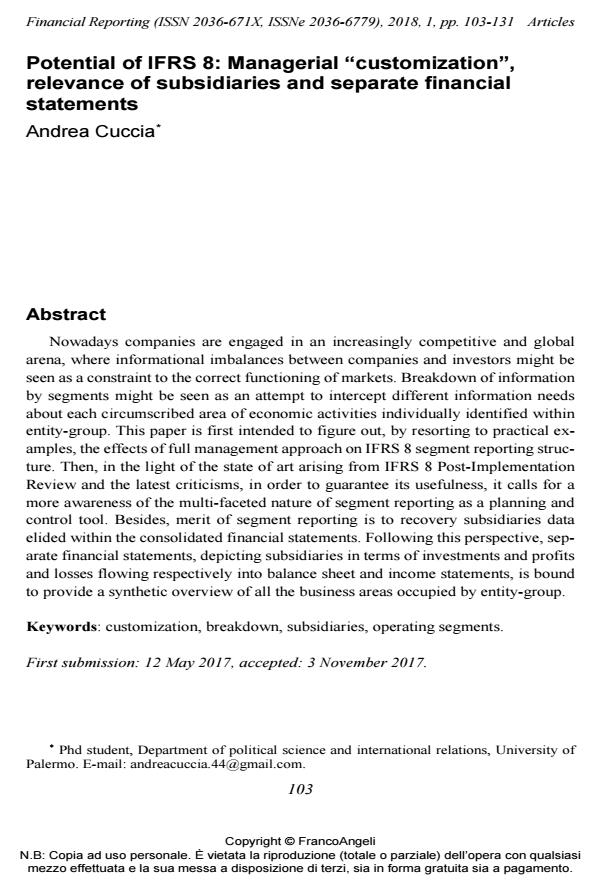Potential of IFRS 8: Managerial "customization", relevance of subsidiaries and separate financial statements
Titolo Rivista FINANCIAL REPORTING
Autori/Curatori Andrea Cuccia
Anno di pubblicazione 2018 Fascicolo 2018/1
Lingua Inglese Numero pagine 29 P. 103-131 Dimensione file 354 KB
DOI 10.3280/FR2018-001004
Il DOI è il codice a barre della proprietà intellettuale: per saperne di più
clicca qui
Qui sotto puoi vedere in anteprima la prima pagina di questo articolo.
Se questo articolo ti interessa, lo puoi acquistare (e scaricare in formato pdf) seguendo le facili indicazioni per acquistare il download credit. Acquista Download Credits per scaricare questo Articolo in formato PDF

FrancoAngeli è membro della Publishers International Linking Association, Inc (PILA)associazione indipendente e non profit per facilitare (attraverso i servizi tecnologici implementati da CrossRef.org) l’accesso degli studiosi ai contenuti digitali nelle pubblicazioni professionali e scientifiche
Nowadays companies are engaged in an increasingly competitive and global arena, where informational imbalances between companies and investors might be seen as a constraint to the correct functioning of markets. Breakdown of infor-mation by segments might be seen as an attempt to intercept different information needs about each circumscribed area of economic activities individually identified within entity-group. This paper is first intended to figure out, by resorting to practical examples, the effects of full management approach on IFRS 8 segment reporting structure. Then, in the light of the state of art arising from IFRS 8 Post-Implementation Review and the latest criticisms, in order to guarantee its useful-ness, it calls for a more awareness of the multi-faceted nature of segment reporting as a planning and control tool. Besides, merit of segment reporting is to recovery subsidiaries data elided within the consolidated financial statements. Following this perspective, separate financial statements, depicting subsidiaries in terms of in-vestments and profits and losses flowing respectively into balance sheet and in-come statements, is bound to provide a synthetic overview of all the business areas occupied by entity-group.
Parole chiave:Customization, breakdown, subsidiaries, operating segments.
Andrea Cuccia, Potential of IFRS 8: Managerial "customization", relevance of subsidiaries and separate financial statements in "FINANCIAL REPORTING" 1/2018, pp 103-131, DOI: 10.3280/FR2018-001004